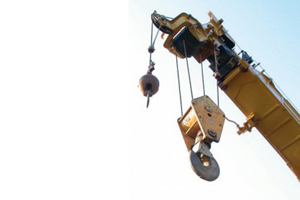
The most important feature of the hoists is that the loads you are lifting can stop in a desired position without a force and the arm force required to lift the loads is less, the lack of such mechanical hoists is that the lifting time of the hoist is higher than the hoist hoists.
One of the reasons for the widespread use of hoists is that the lifting force is less than the lifted load. However, this brings about a disadvantage as well as being beneficial. The hoists perform the lifting process over a longer period of time since the lifting force is low while lifting the load.
The hoists consist of two concentric and co-rotating fixed and one movable free rollers. Manual hand hoists are easy to maintain and small in size, making them a sought-after equipment in small-scale workshops and businesses.
Easily repairable hoists with their simple structure can be used frequently in construction sites, heavy machinery industry, factories, workshops, warehouses and shipyards due to their small size.
Accidents in hoists generally consist of production or assembly errors, usage errors and inadequate inspection and maintenance conditions.
Hoists are also a tool in the group of lifting or forwarding machines. It can move on portable legs and can be installed anywhere. It is a hoist arrangement used to transport heavy objects from one place to another with its rollers arrangement.
They are generally used in construction work or in production workplaces with several floors to draw material from the floor to the upper floors. They are also widely used in small workshops and businesses because of their small size and easy maintenance. They serve as a kind of portable crane.
There are varieties such as electric hoist, chain hoist and low ceiling hoist. The hoists must be inspected by specialist engineers at least once a year unless the relevant standards are stipulated for any other period. This obligation is introduced by the Occupational Health and Safety Law. In the event of an unexpected accident, employers will be responsible. Therefore, regular checks of the hoists are a necessity as well as a security condition.
In case of continuing use of carascals which are not deemed appropriate, responsibility is not on the controlling organization but on the employer. The inspection and test organization prepares the results of the inspection as a report and submits it to the relevant company.